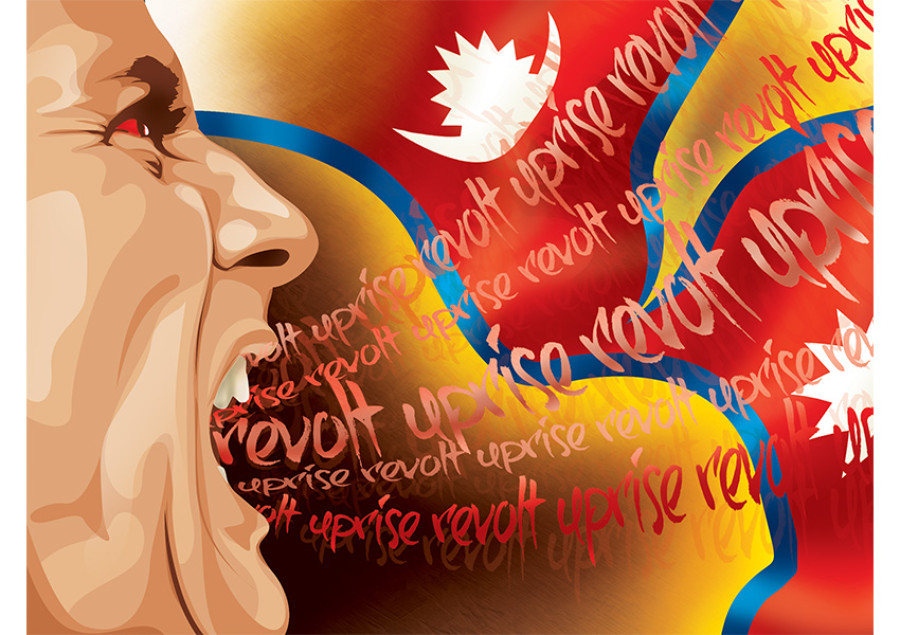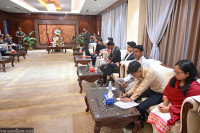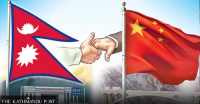Opinion
Impatient parties
Tikapur was an outcome of the mishandling of the federalism issue by the leaders
Khagendra N. Sharma
What happened in Tikapur last week was very unfortunate. Yet, going by the way politics works in Nepal, it was not unexpected. Protestors killed seven peaceful police personnel and a toddler, the son of a policeman. One among the dead, a Senior Superintendent of Police (SSP), had reportedly approached the agitated crowd to persuade them not to protest in the restricted area. The demonstrators who were carrying knives, batons and slingshots, instead of listening to the officer, brutally murdered him even though the police had not fired at them. The whole episode looks to have been remotely directed and controlled.
Problematic demands
The incident, nonetheless, was an outcome of the mishandling of the federalism issue by the leaders. What the big four leaders had decided in the name of the 16-point agreement was filled with flaws. Yet, they ignored the possibility of widespread protests and revolt because the plan went against all the slogans that some of them had raised themselves.
The worst slogan was that of carving provinces on the basis of ethnicity in a country with over 100 ethnic groups, large and small. Though discrimination of various kinds did exist, Nepalis have been living together in harmony for ages. It is very difficult to find an absolute majority of a single ethnic group in any of Nepal’s 75 districts. Still, the so-called leaders began sloganeering for federalising the country along the lines of ethnic identity. If there is no absolute majority of one ethnic group in any district, it is irrational to talk of carving a federal province along ethnic lines. It is atrocious to impose the identity of one minority group on the majority composed of various ethnic groups. Can Nepal sustain the creation of 100 federal units? Yet, irrational as it may be, ethnic groups were encouraged to demand ethnic federal units until things went out of control.
The other wrong demand was to carve a single federal province in Madhes, stretching from the east to the west. If ethnic identity is to be the basis of federal units, how does having a single province in Madhes help the cause as there are multiple ethnic groups in the flatlands with different languages and cultural practices? Even so, the demand for Ek Madhes, Ek Pradesh was supported by the same group of leaders who stood for federalism along the lines of ethnic identity, oblivious of the contradiction in the logic. Furthermore, how sensible is it to argue that people living across the vast lands of the Tarai are homogenous? Regrettably, this demand damaged the age-old interdependent relationship between the hills and the flatlands.
Federal problems
The people, however, rejected both the demands for single ethnic identity federalism and one Madhes in the 2013 election to the Constituent Assembly (CA). Yet, most leaders chose not to respect the wishes of the people, and neither did they try to resolve the contradiction in their demand through mutual consultation. Instead, they let society be polarised and signed the 16-point agreement. The best part of the 16-point agreement was that at least the leaders of the four major parties agreed to go ahead with the drafting of the constitution by abandoning the identity criteria. The worst part was that the parties that continued to demand federalism along identity lines were not involved in the decision-making process, leaving plenty of room for dissent. So, when the first draft of the constitution was presented to the CA, the dissenters tore it up. Even then, there was room for the document to be owned by the people. When the draft was made available to the people for their comments, they found many faults with it.
The most important aspect of the constitution was the restructuring of the state. The parties had first agreed through the 16-point agreement to carve eight provinces to be identified by a federal commission and endorsed by Parliament. But the people did not want a constitution without finalising the names and number of the proposed federal provinces. So the four major parties sat down and demarcated six instead of eight states which was rejected from all directions with violent demonstrations. There also the fault lay in the fact that the smaller parties were not consulted. Again, the four parties decided to dismember parts from adjoining states and create a consolatory seventh state, which also did not address the ongoing grievances. So, there was a feeling of rejection. This simmering grievance is the major iceberg. The basic cause is the indifference of the so-called four party leaders.
Why the hurry?
The hurry with which the fast-track method was adopted to complete the constitution has four motivations. The Nepali Congress wants the constitution to be promulgated while the Cabinet is headed by Sushil Koirala; the CPN-UML is in a hurry to install its leader KP Oli as the prime minister which is only possible after the promulgation of the constitution; the Maoists are in a hurry to improve its image as a civil party after the failure of its previous revolting tactics and the Madhesi Loktantrik Party is looking for an opportunity to sneak back into the mainstream. These motivations are not bad by themselves, but the impatience resulting from these motivations led the party leaders to ignore the other stakeholders. What was needed was dialogue after dialogue involving all the possible stakeholders and addressing all the possible curves and contours of the federalisation issue.
The country needs a viable constitution. For this, there should be common ownership of the constitution by the people. If the country could wait for more than eight years to get a new constitution, a few more weeks or months spent with due caution and wisdom would have been a good investment. It is encouraging to note that the prime minister has invited all the stakeholders for consultation. The country cannot remain unitary at this stage, but it cannot withstand the load of too many states either. The leaders of the small parties demanding single identity states should realise that the country cannot sustain too many states, and that the strength of the nation lies in unity amid diversity. That is Nepal. Each part of the country should remain united.
Sharma is a political analyst




 17.12°C Kathmandu
17.12°C Kathmandu










